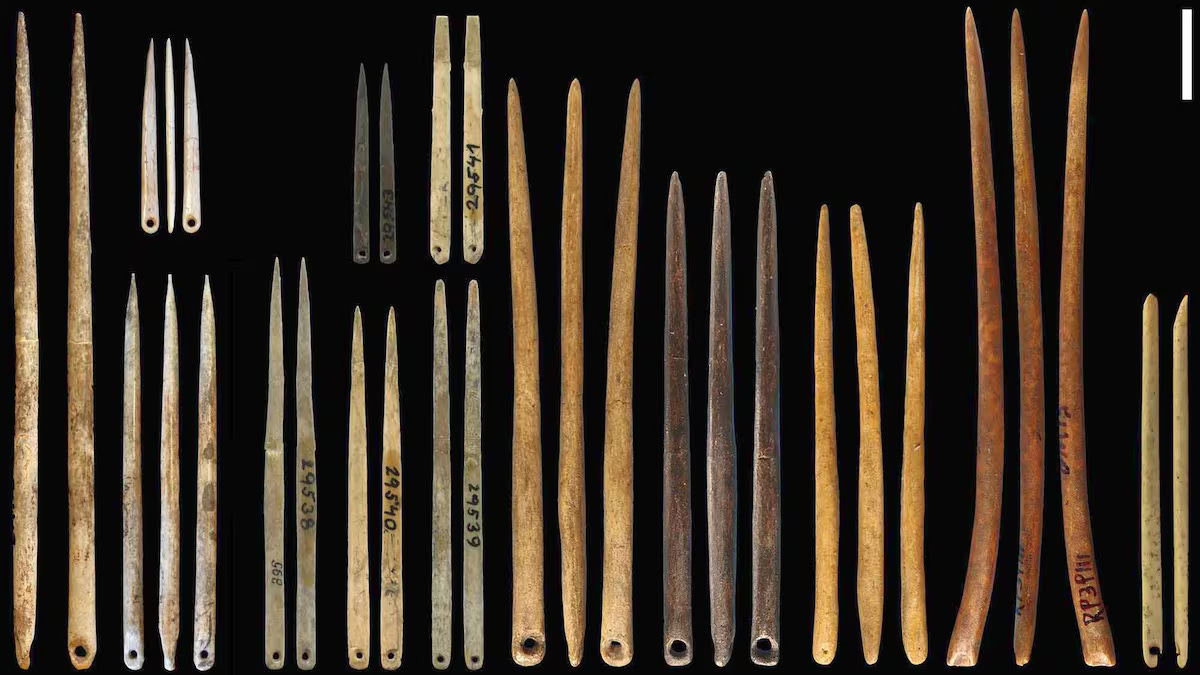The Role of Eyed Sewing Needles in the Expansion of Early Humans
Innovative tools enabled early humans to create sophisticated clothing, aiding survival and social expression during the Ice Age
A hole in a bone awl must have been one of the great drivers of human expansion in its beginnings. For hundreds of thousands of years, early hominid species did not need much shelter; the climate in most of Africa made it unnecessary. However, as they expanded further north, the fossil record shows how they became sheltered. No clothing has been preserved, but an increasing number of tools to make it have been found. At first, they were simple flakes to tear off and cut the hides, but later awls and burins emerged to make holes in them and sew them. But the truly great innovation, led by Homo sapiens, was eyed needles. With them, the first humans not only dressed to protect themselves even better from the cold; needles also allowed them to use the garments as a form of expression, as a culture.


